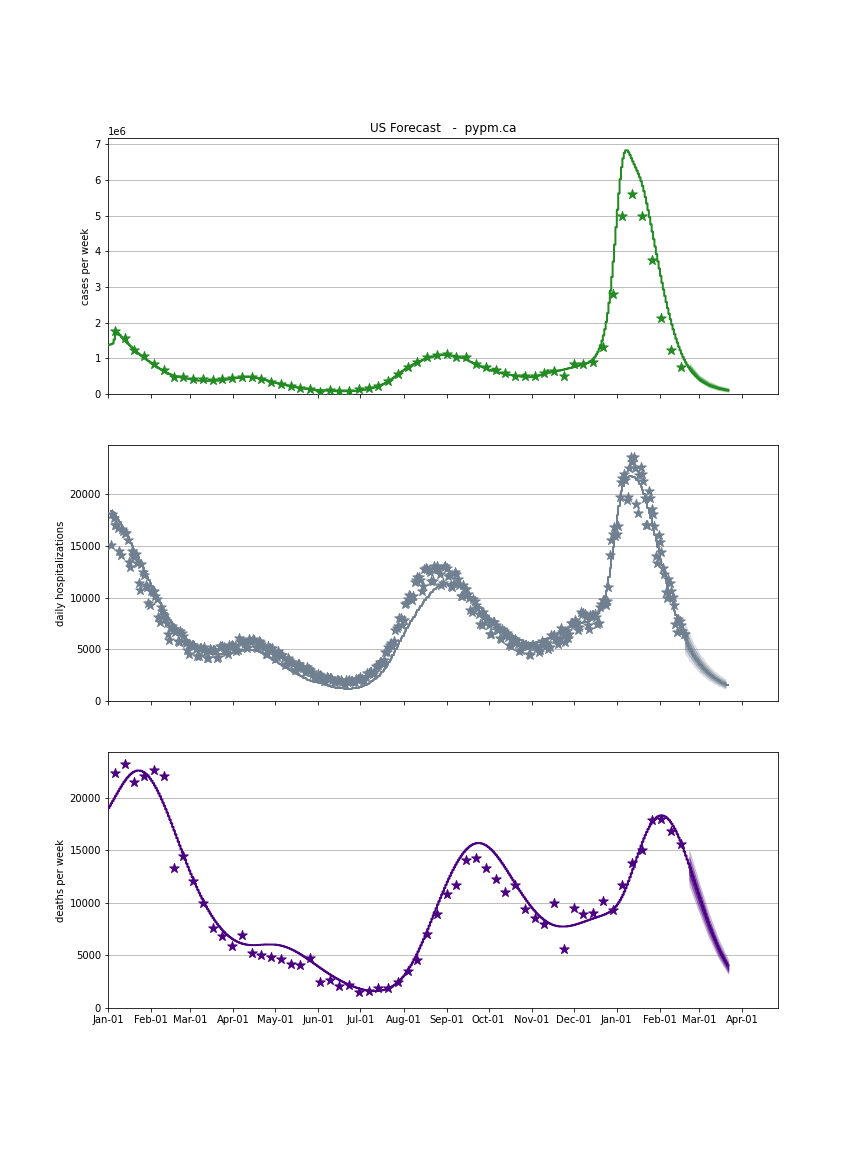February 20, 2022 Analysis of US state data
The characteristic Omicron signature of rapid growth in cases and hospital admissions, has been visible in all US states for several weeks. This was followed by a dramatic reduction in growth rate near the end of 2021, as reported in previous reports. Many states are now past the peak in daily cases and hospital admissions.
This report shows the result of analyses that use hospital admission data to estimate the transmission rate following the rapid transition to lower growth rate. The only parameters adjusted are the current transmission rate (assumed constant since the transition near the end of December), and normalization constants. Hospital admission data are used, to avoid testing capacity issues and to better predict future hospital admission rates. For some states, the model for cases differs significantly from case data.
Rapid reduction in Omicron growth rates
As usual, the infection model is defined by fitting the model to the case data, and the hospitalization and deaths models are derived from the infection model. To estimate the current transmission rate of Omicron, however, hospital admission data are used.
The Omicron variant is assumed to have a much larger susceptible population, due to its ability to evade immunity (natural and vaccination immunity). For this study, those immunized against earlier strains only have 20% effective immunity against omicron.
Booster doses have been included in this analysis, and are assumed to raise the vaccine effectiveness from 20% to 80% with a time delay given by a gamma distribution with mean 10 days and standard deviation 5 days. The Omicron variant is also assumed to produce more infections that go undetected as cases (as compard to Delta).
The green points are the daily cases, the grey points the daily hospitalizations, The larger circles are weekly averages to help guide the eye.
The case data are used to define the periods for which transmission rate appears to be constant. The vertical dashed lines show where the transmission rate is changed. If the susceptible fraction is constant (immunity not changing quickly), constant transmission rates lead to steady exponential growth or decline. With immunity growing, the curves bend downwards due to the herd effect. Interpretting the growth of Omicron with changing Delta rates growth rates leads to additional uncertainty in the interpretations.
Individual state hospitalization analyses
The plots for each state below show the case, hospital admisions, and deaths data since October 15 2021, on a linear scale (left) and log scale (right). The right figures show how the model attributes cases from Delta and Omicron infections, and the hospital admissions from Omicron infections. Omicron hospital admissions make a useful metric to compare the growth of Omicron across different states, removing the widely variable Delta hospital admissions.
The left plots also show the hospital admission model curves from the previous two weeks’ analysis (February 6 and 13), to show the degree of variability when new data is included. For most states the previous weeks’ model projections agree with the recent data.
The model is able to describe data from the states by introducing a transition to lower transmission rate near the end of December 2021. This introduces a kink in the log scale plots (as constant transmission rate corresponds to straight lines, if population immunity is roughly constant).
Following the individual state plots, summaries of all states are shown below.
Alaska

Alabama
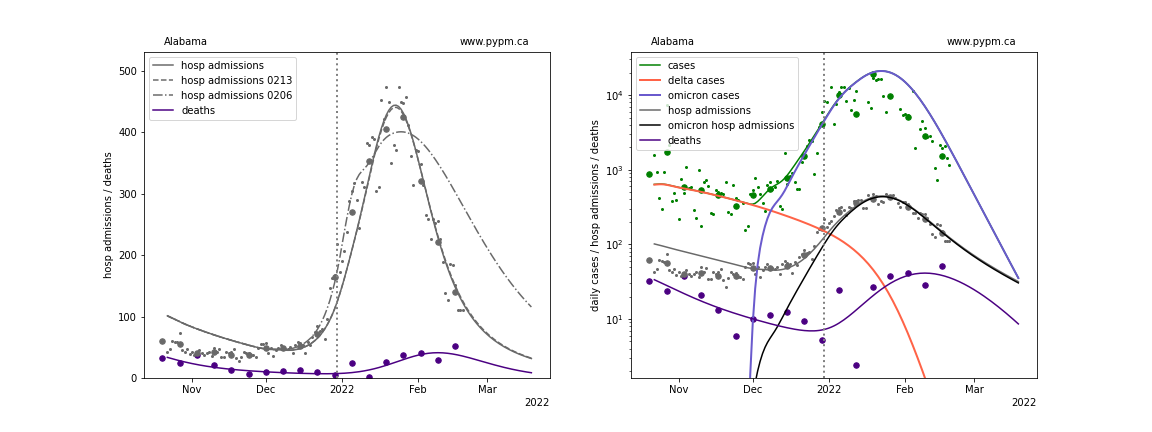
Arkansas
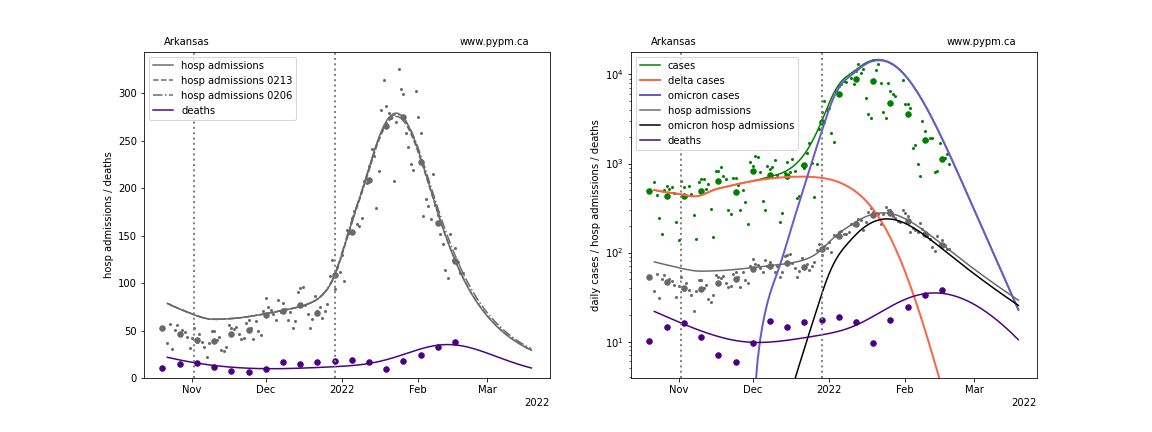
Arizona
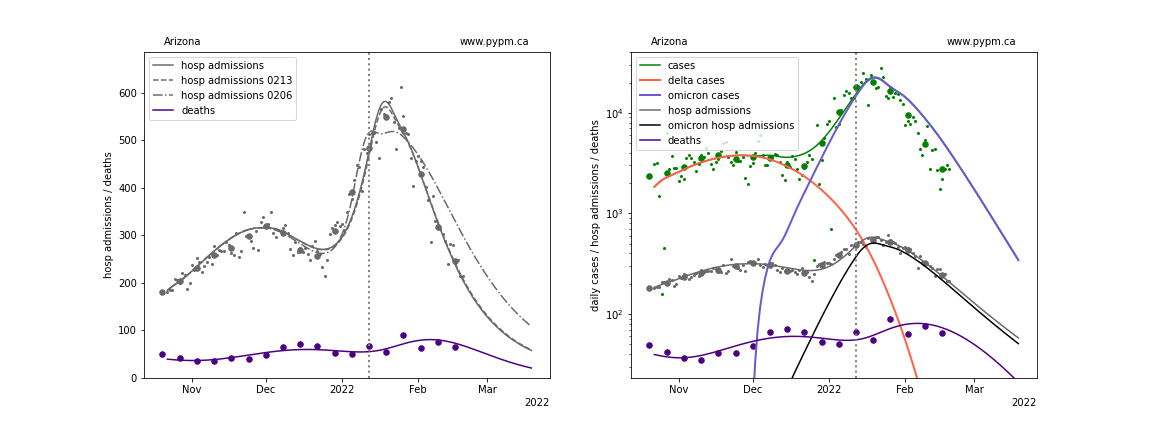
California
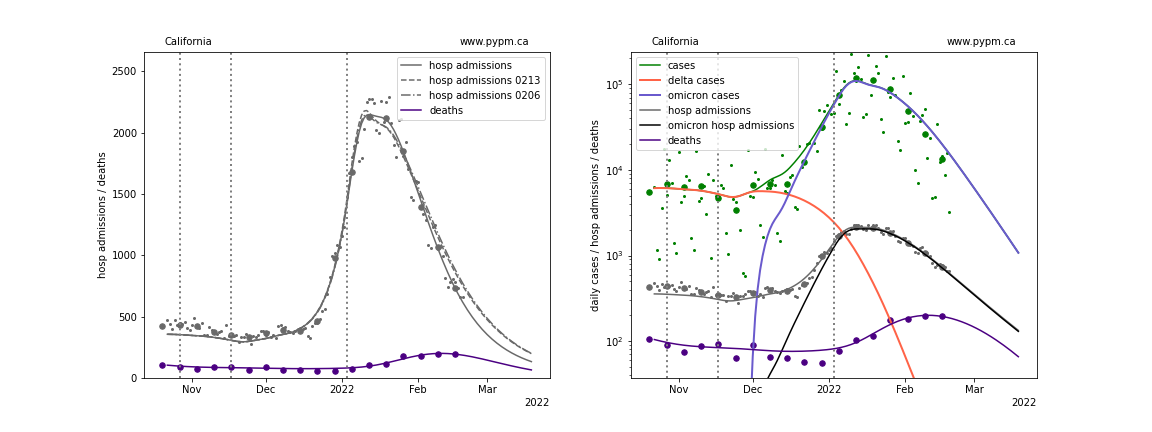
Colorado
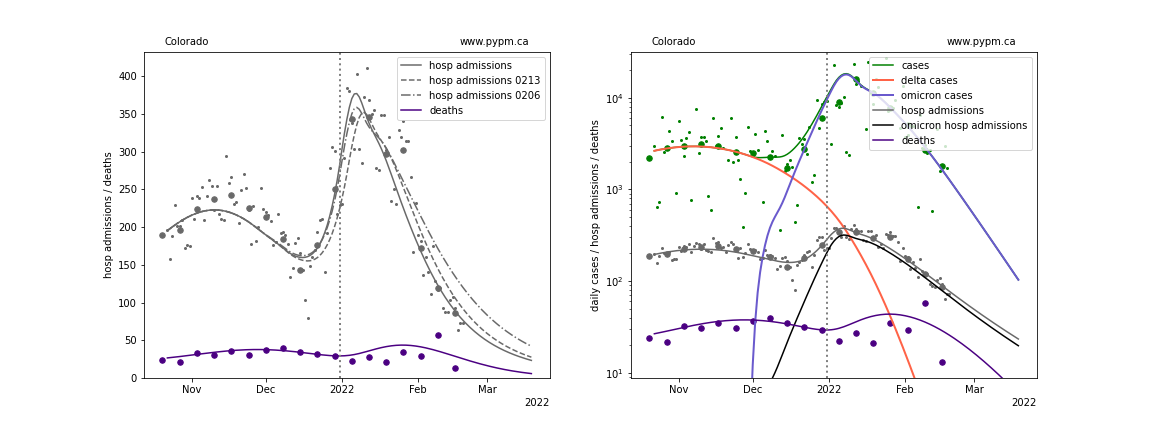
Connecticut
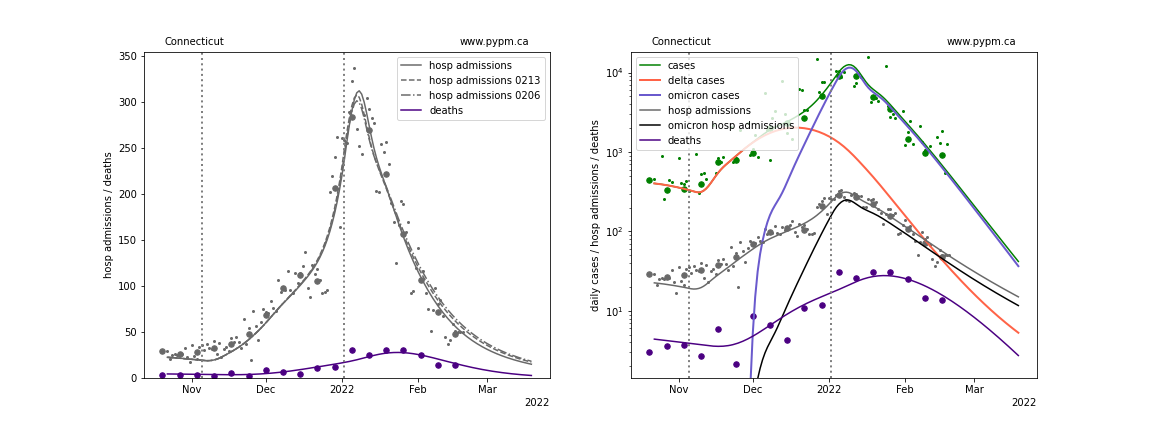
District Of Columbia
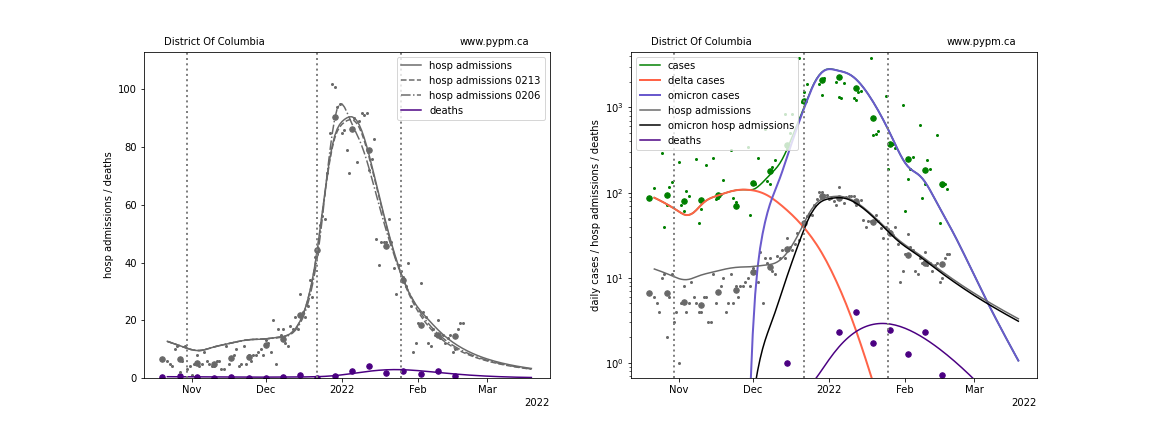
Delaware
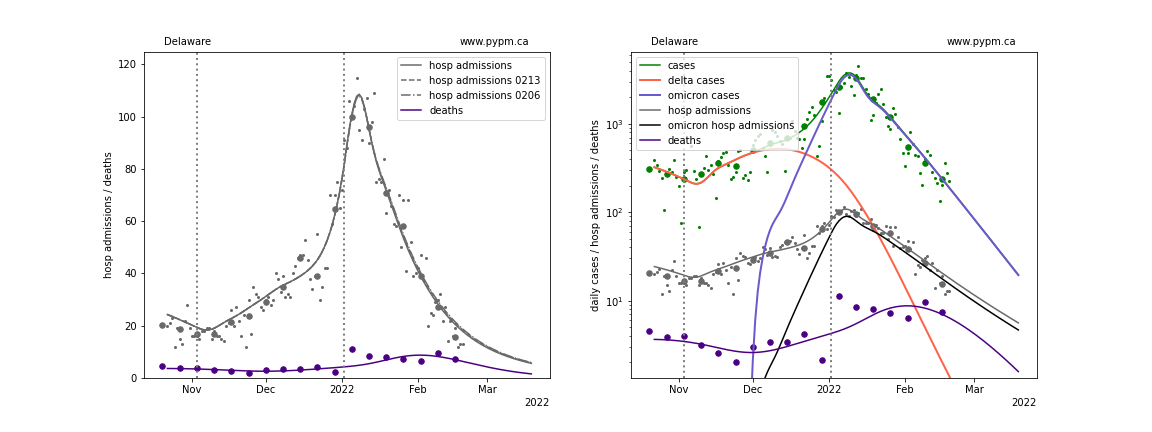
Florida
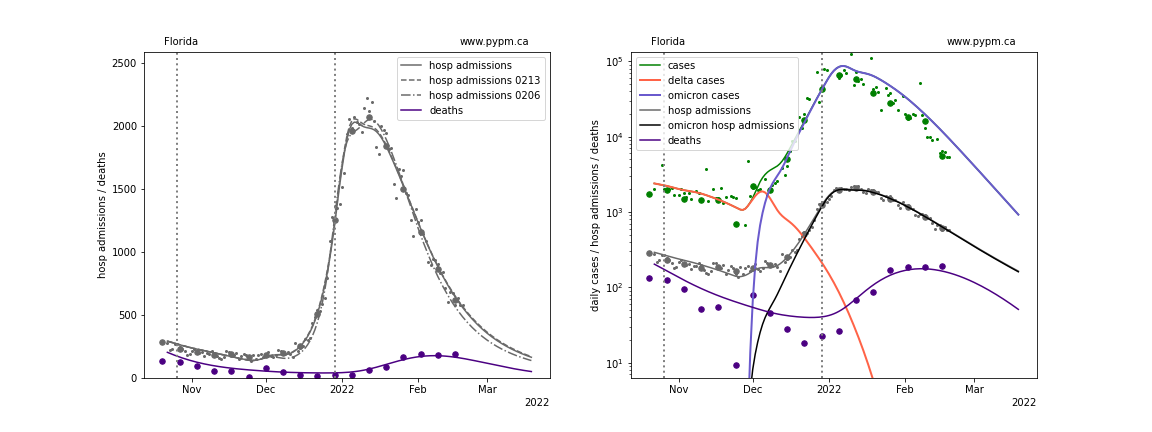
Georgia
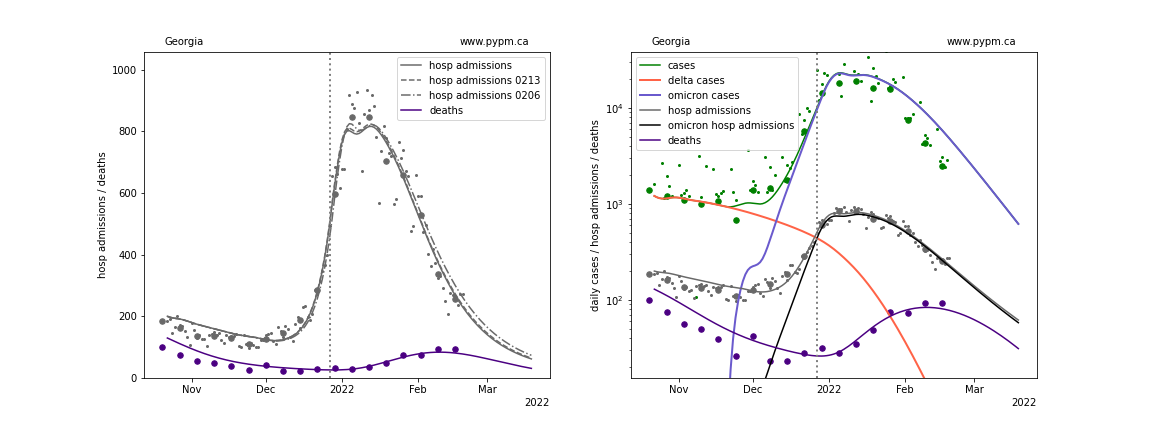
Hawaii
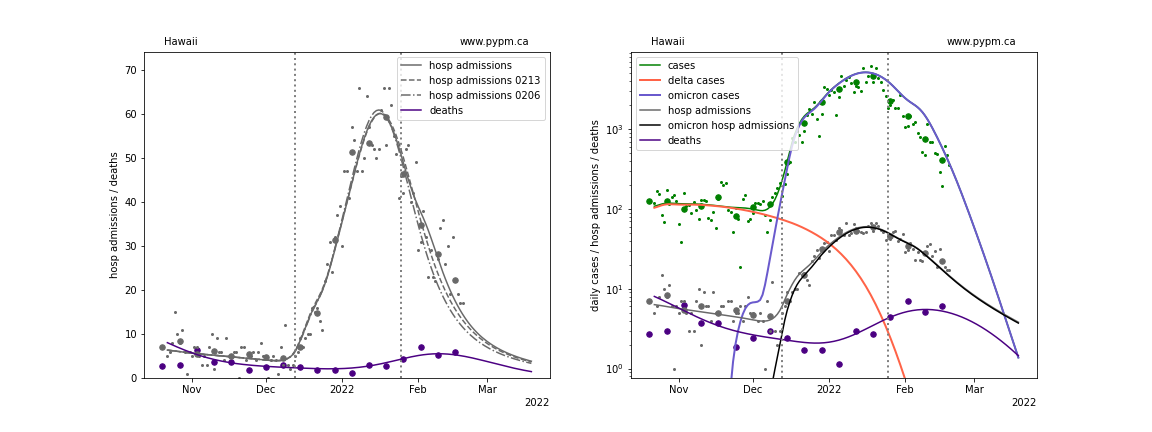
Iowa
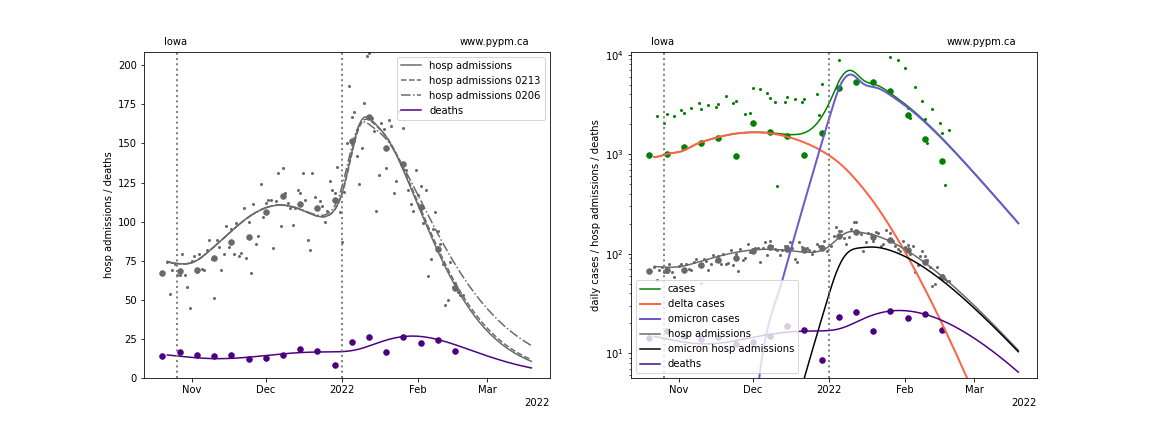
Idaho
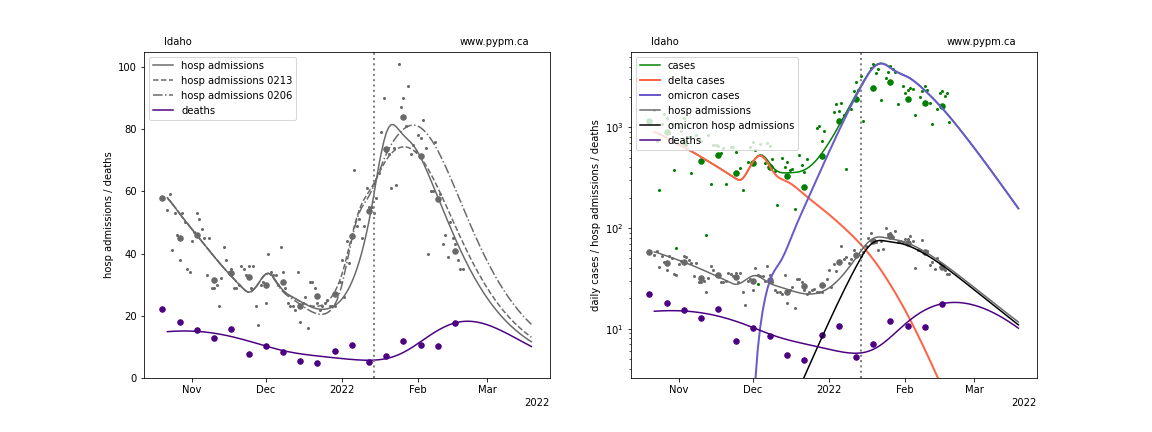
Illinois
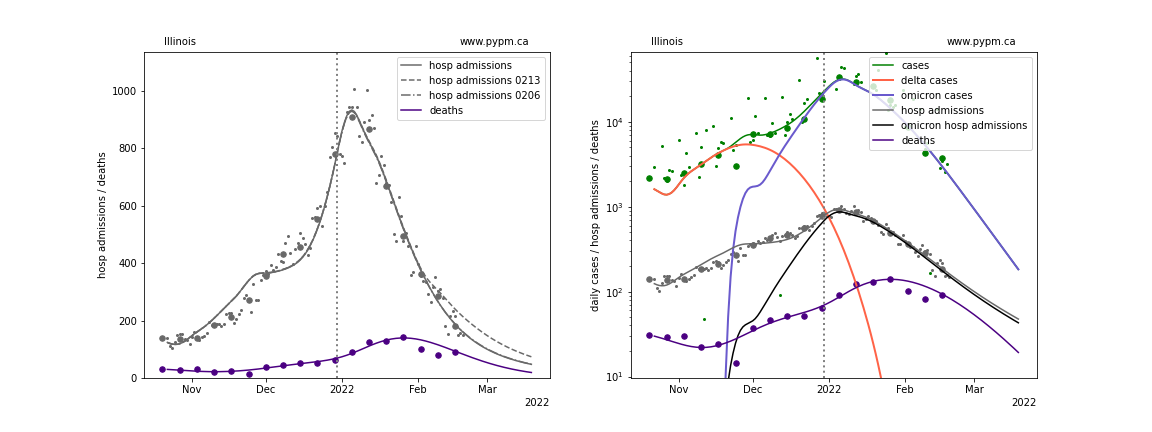
Indiana
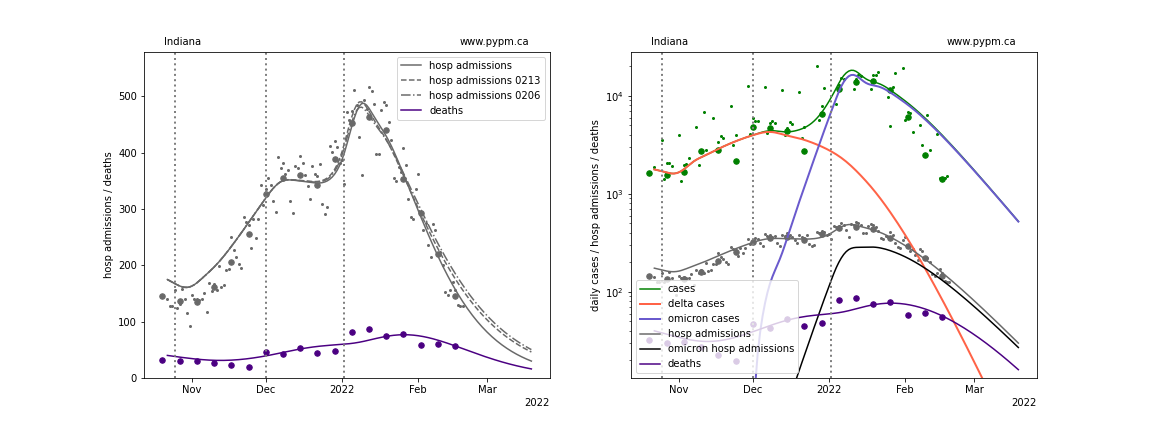
Kansas
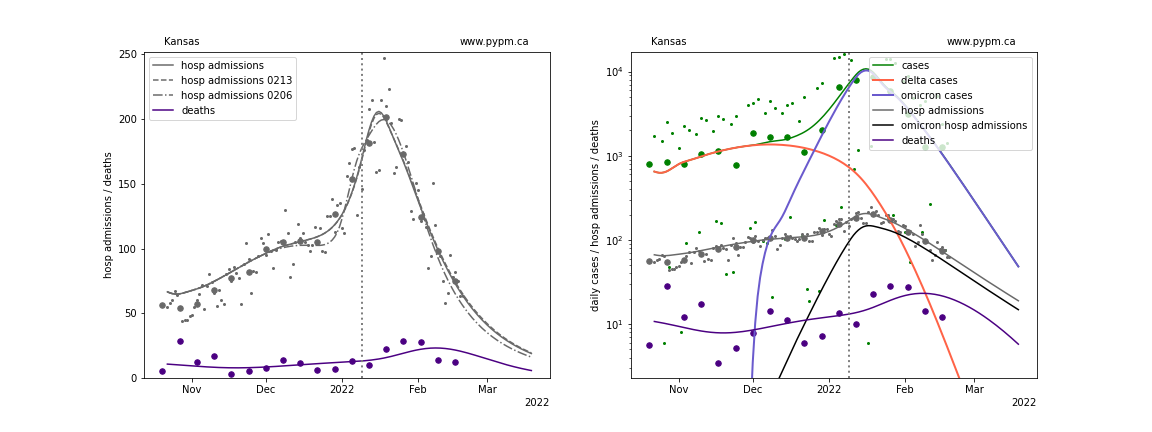
Kentucky
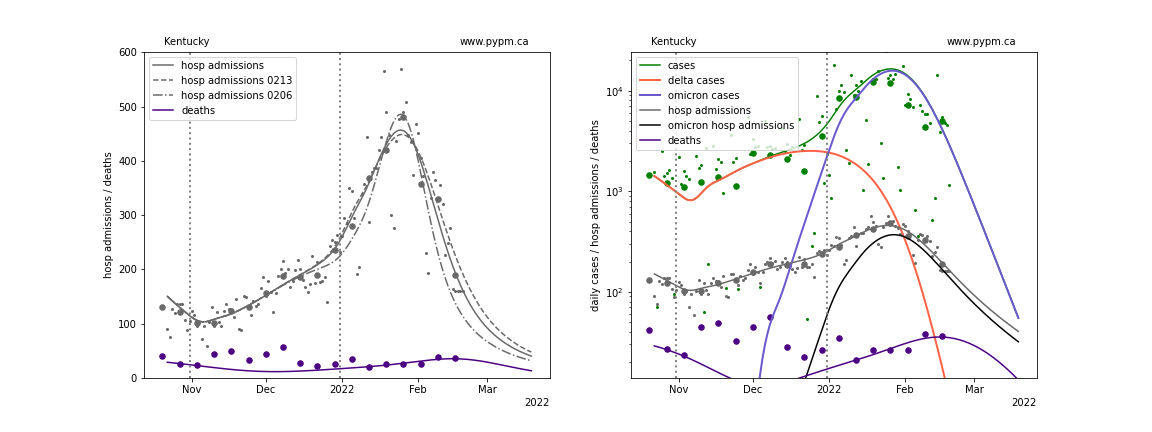
Louisiana
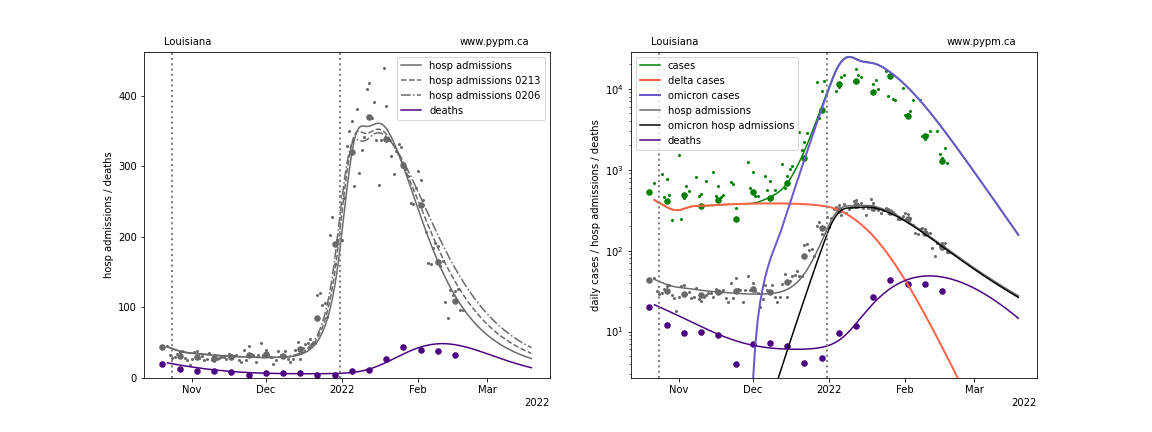
Massachusetts
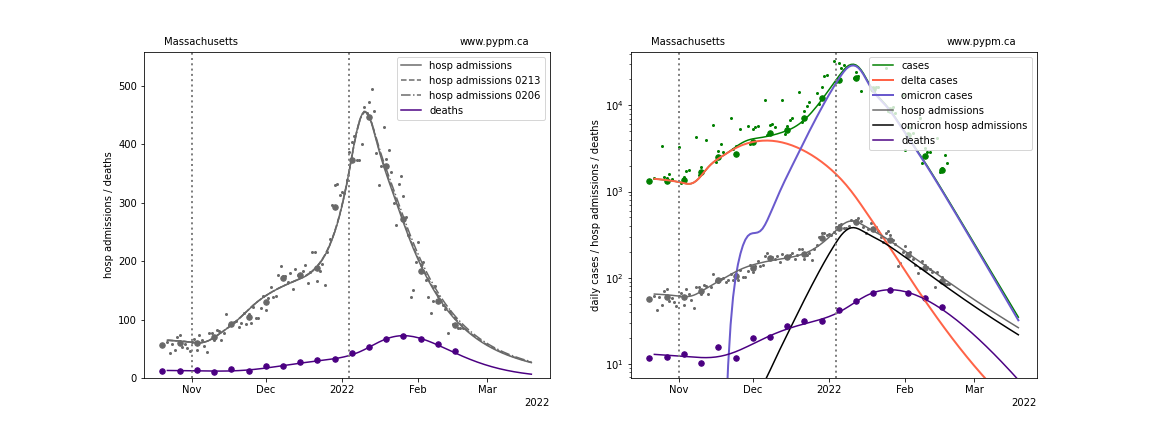
Maryland
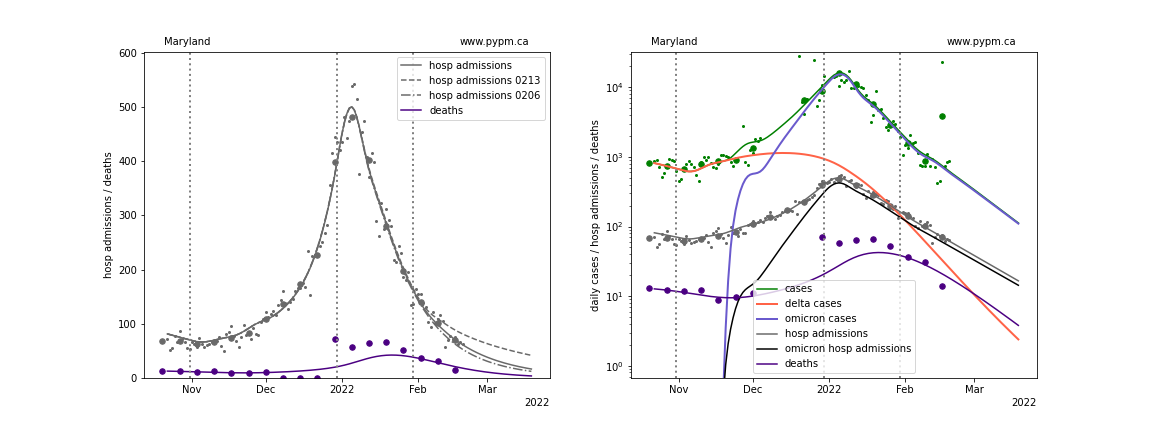
Maine
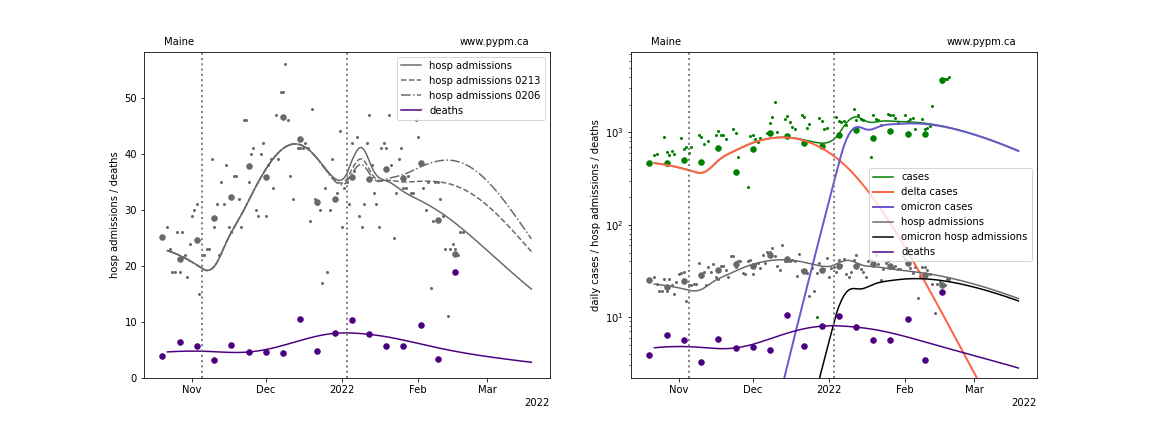
Michigan
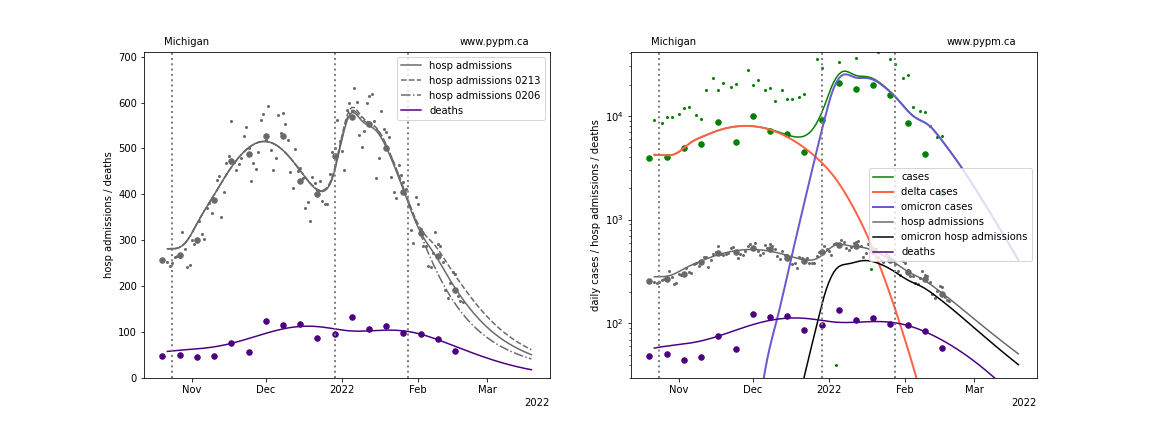
Minnesota
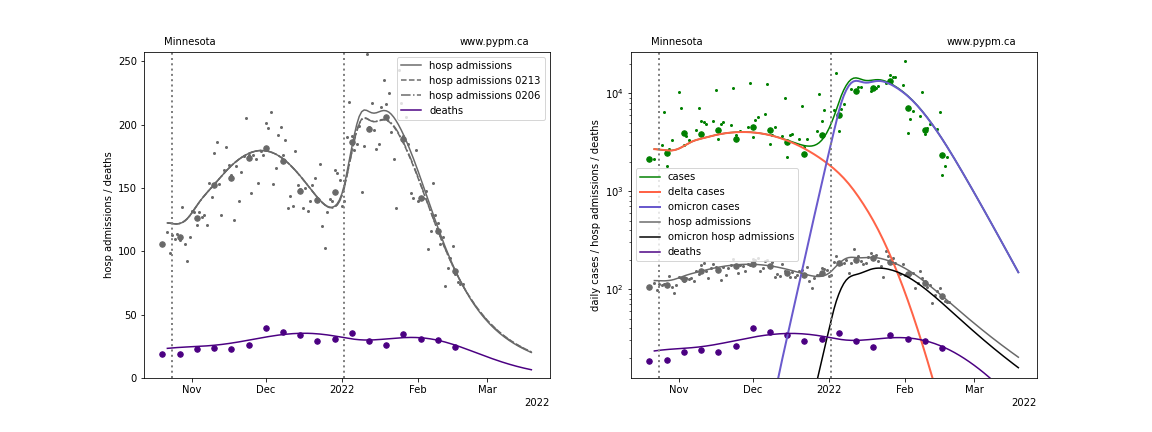
Missouri
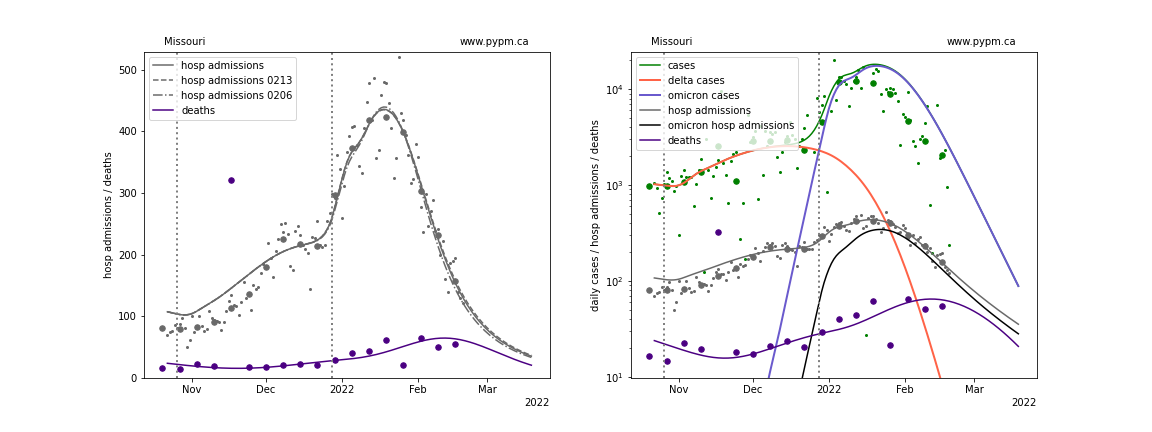
Mississippi
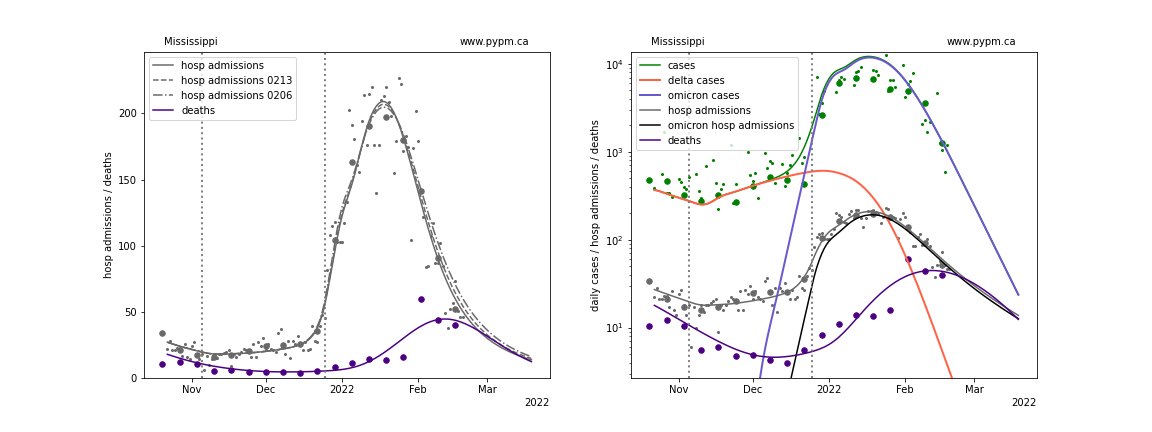
Montana
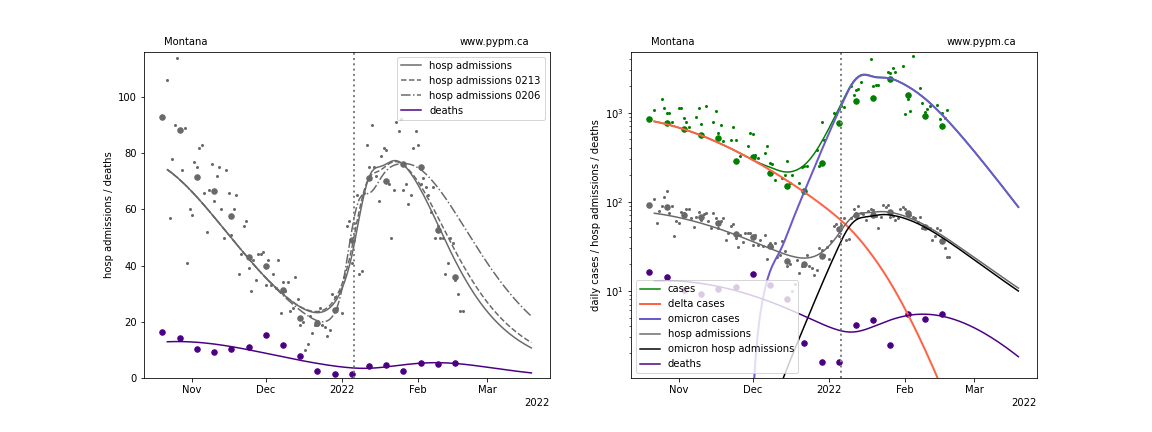
North Carolina
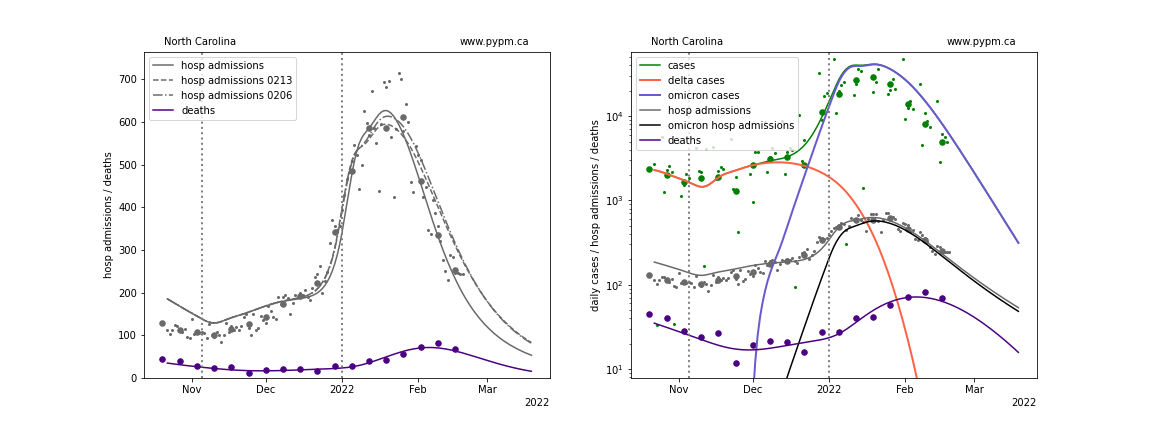
North Dakota
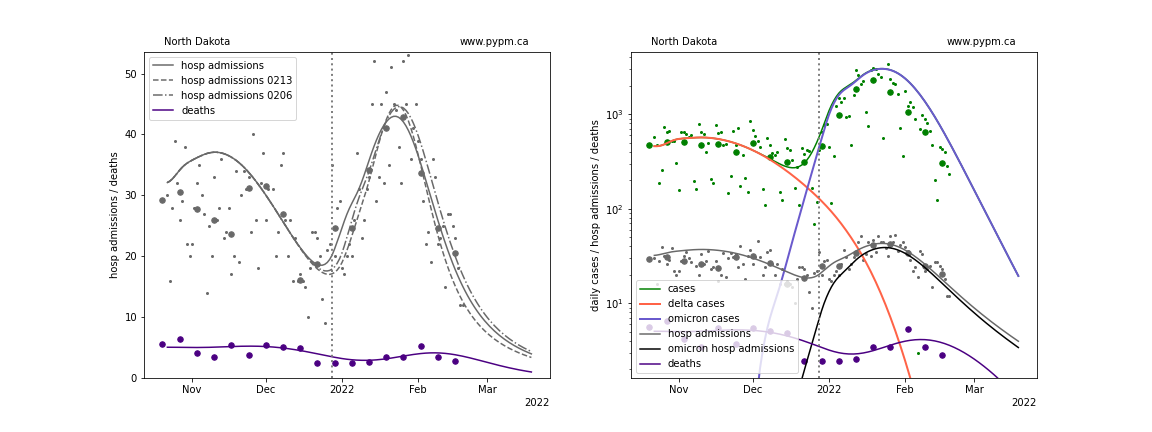
Nebraska
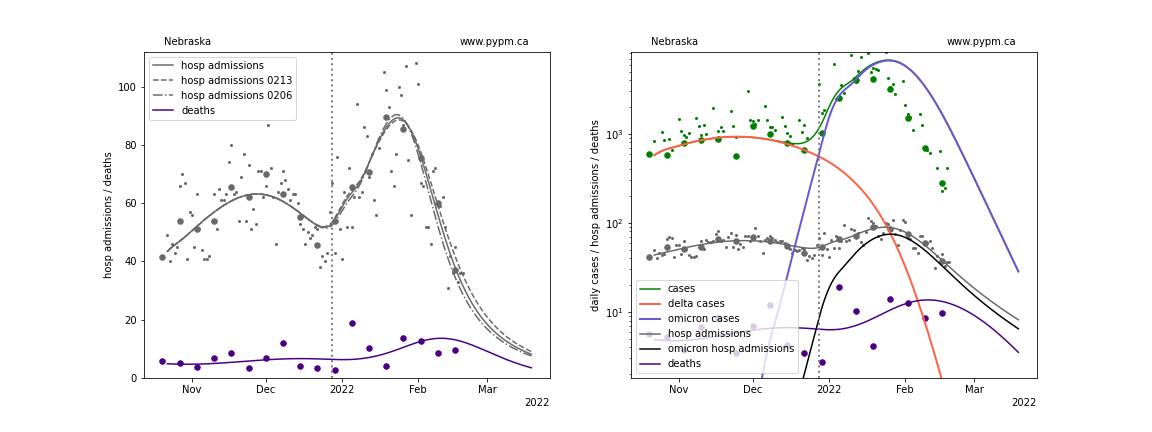
New Hampshire

New Jersey
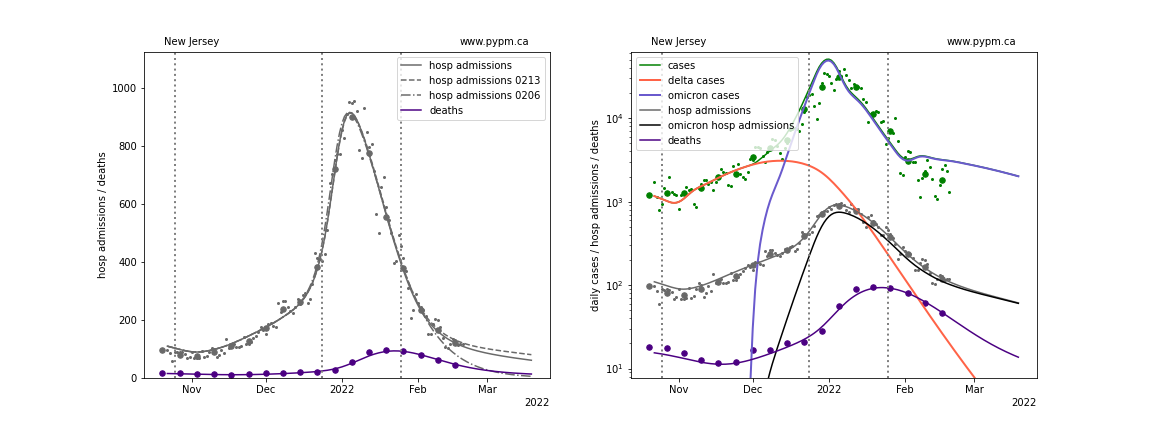
New Mexico
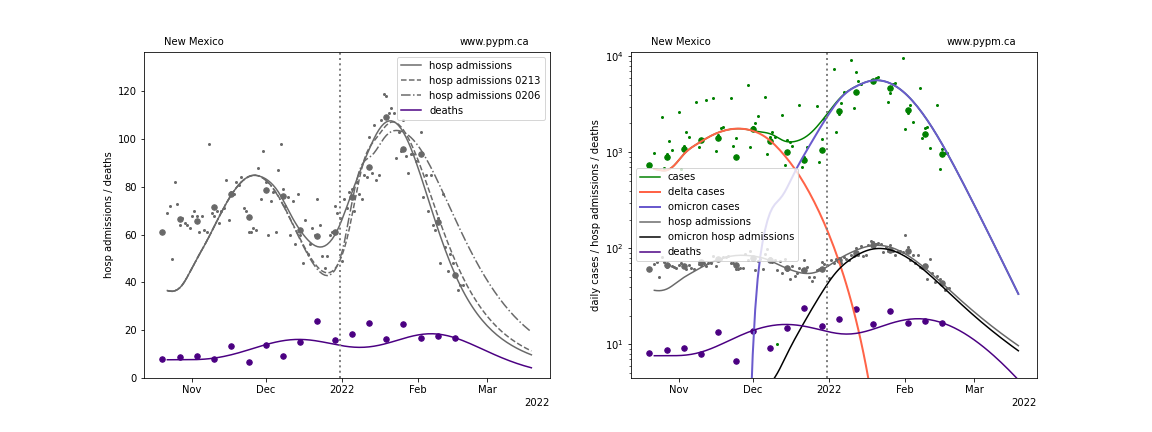
Nevada
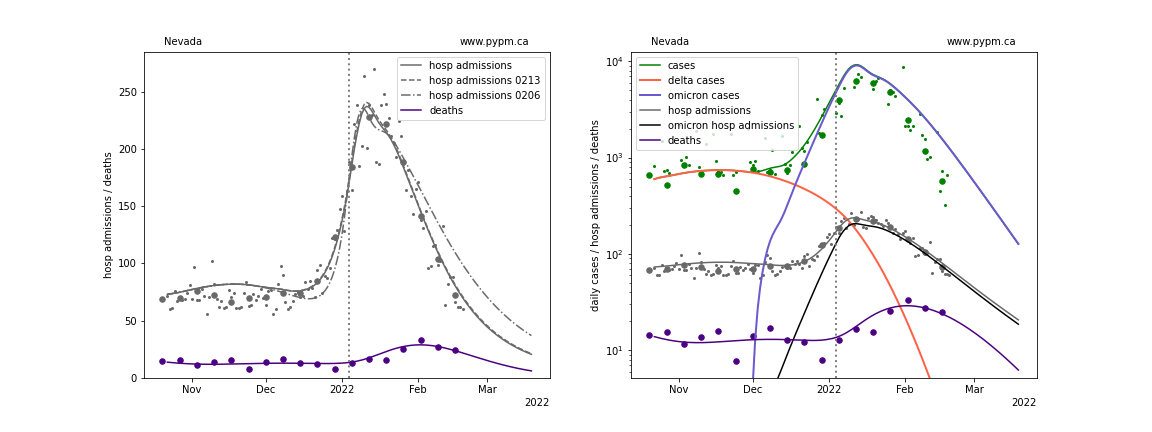
New York
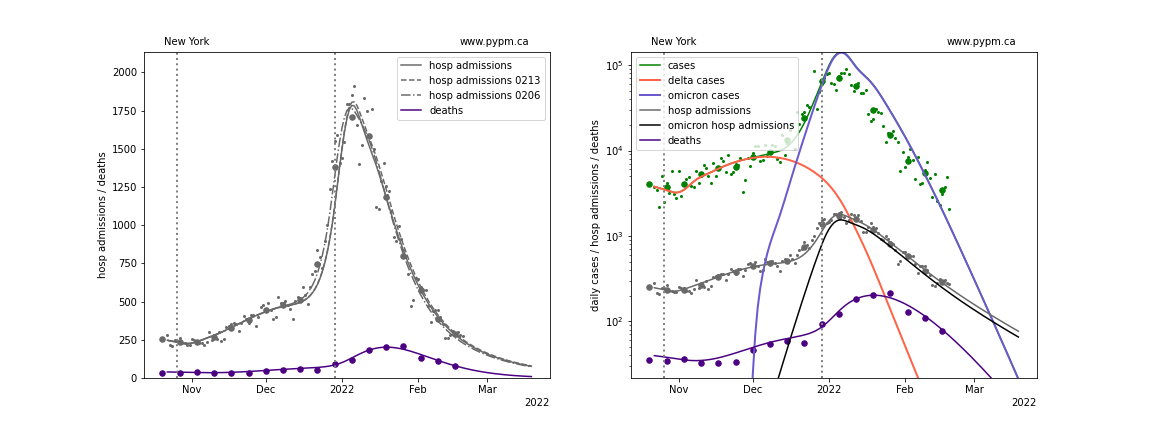
Ohio
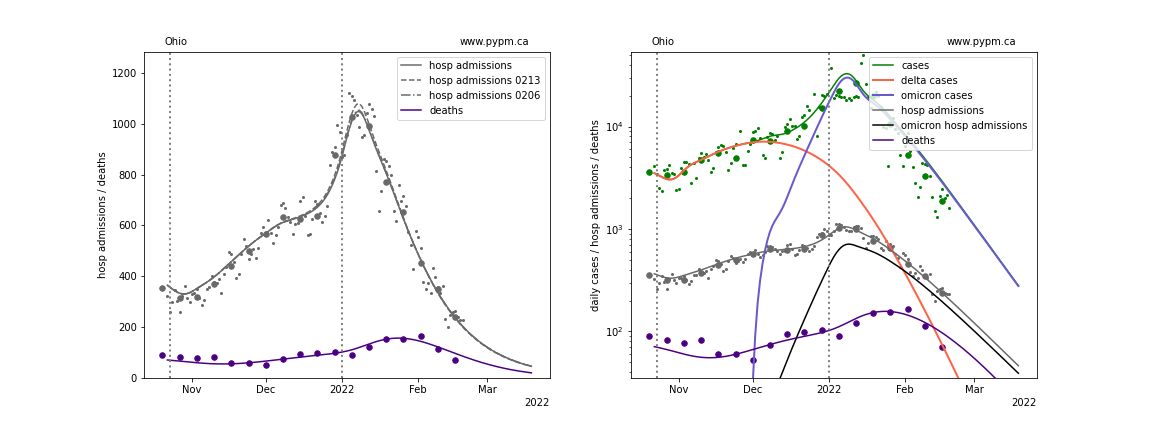
Oklahoma
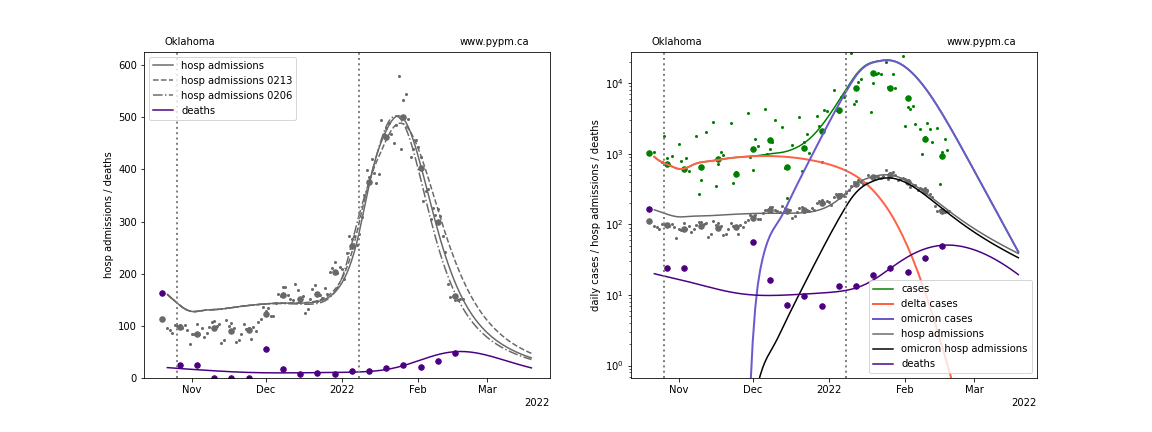
Oregon
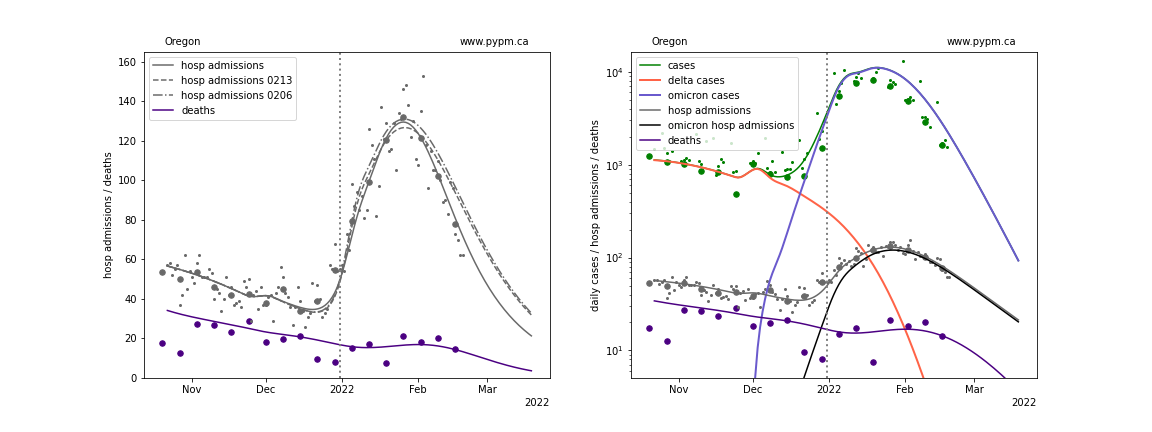
Pennsylvania

Puerto Rico

Rhode Island
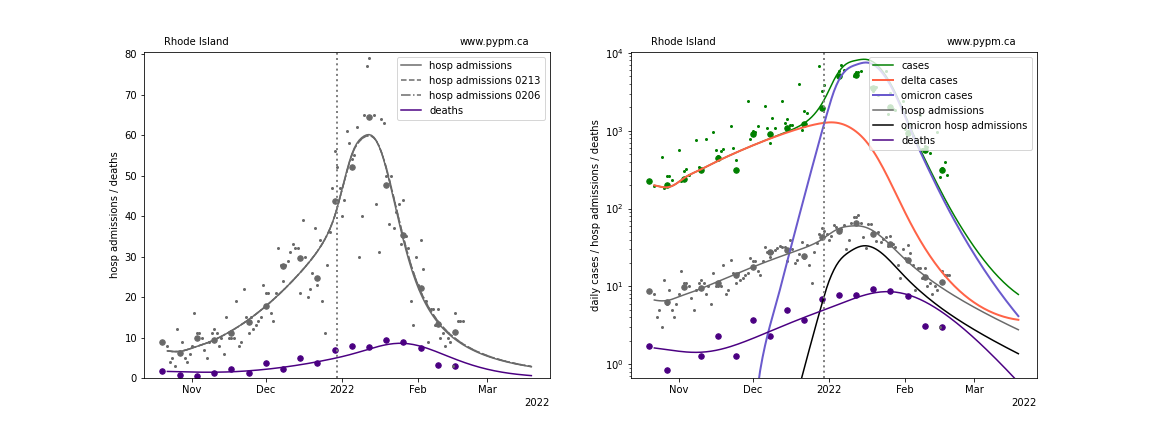
South Carolina
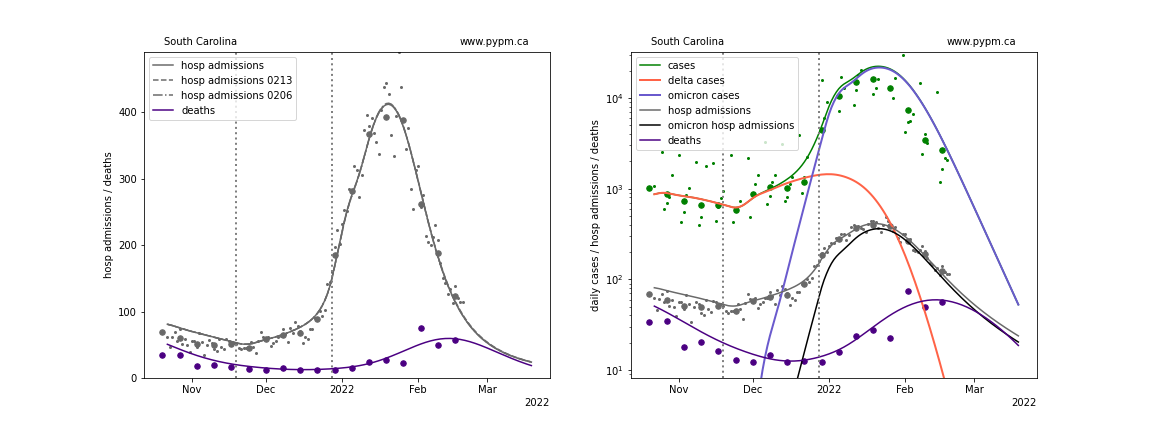
South Dakota
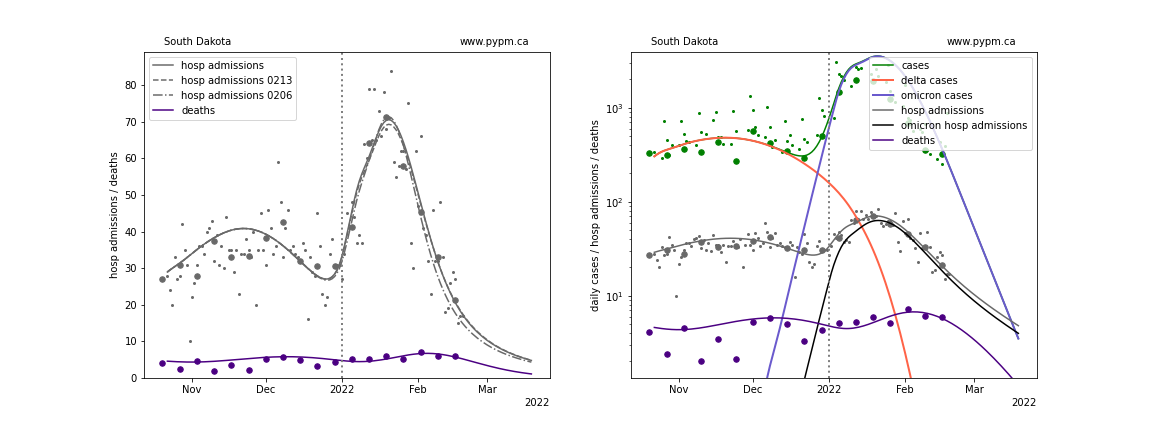
Tennessee
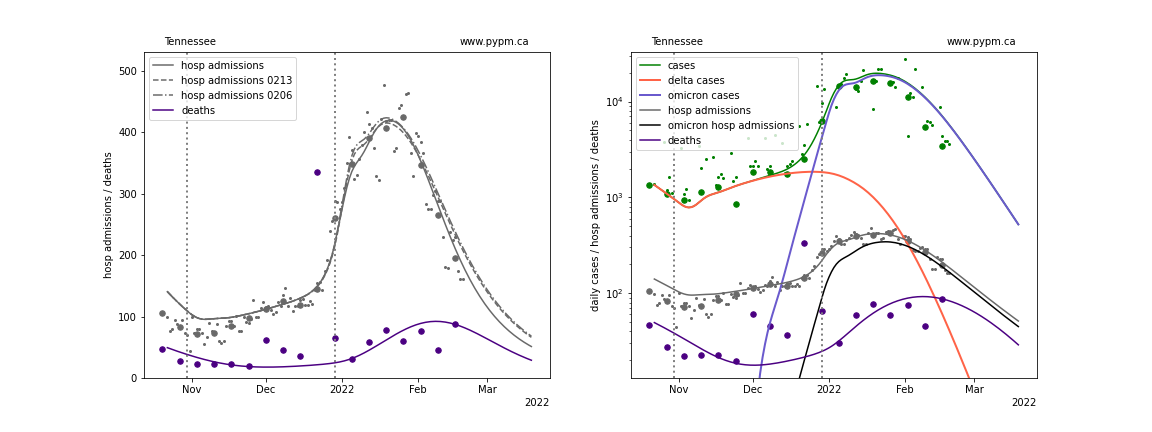
Texas
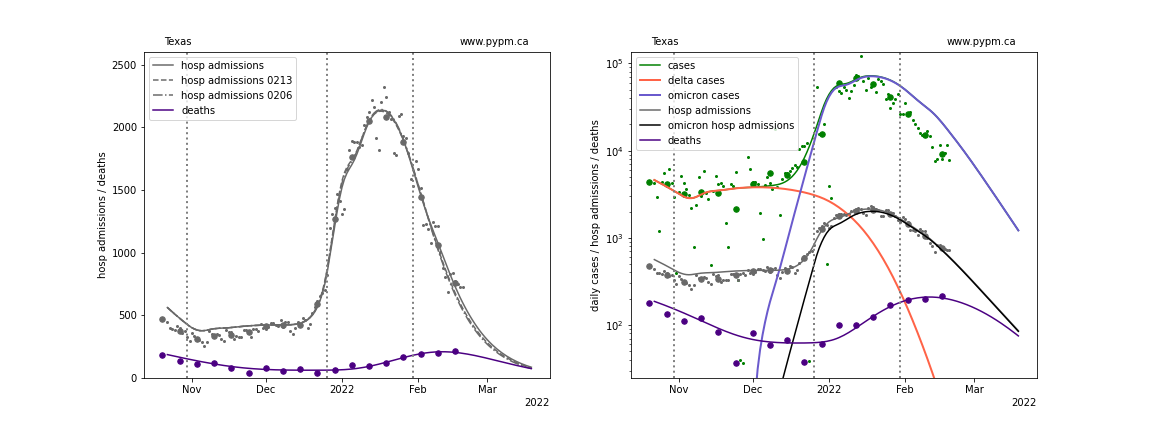
Utah

Virginia
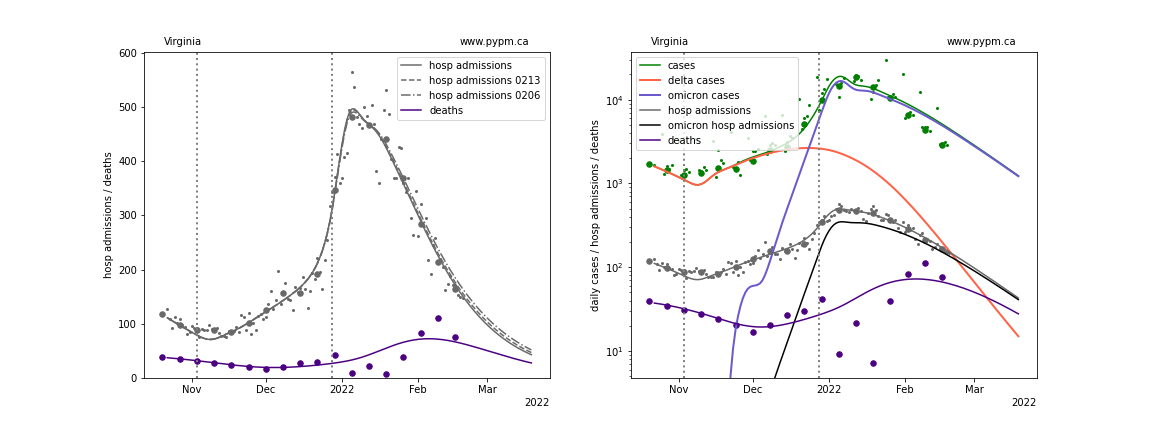
Vermont
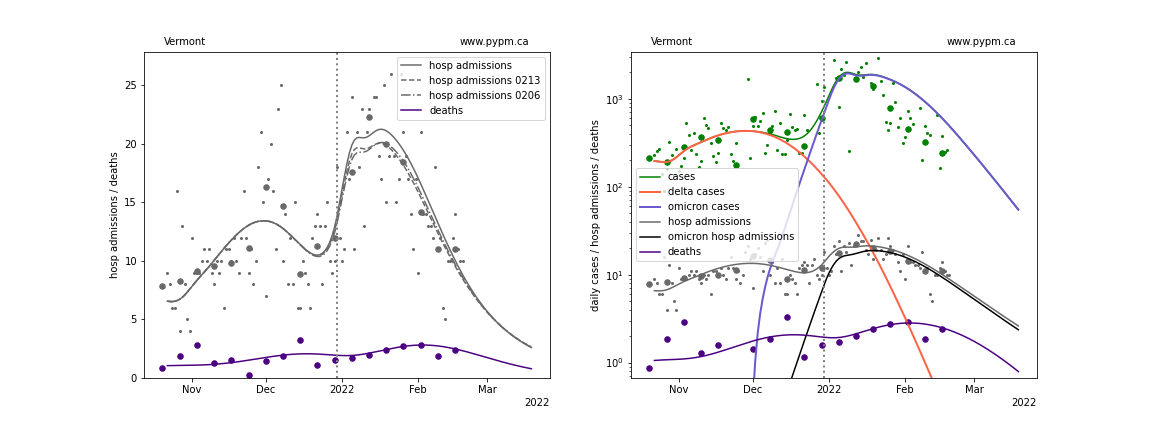
Washington
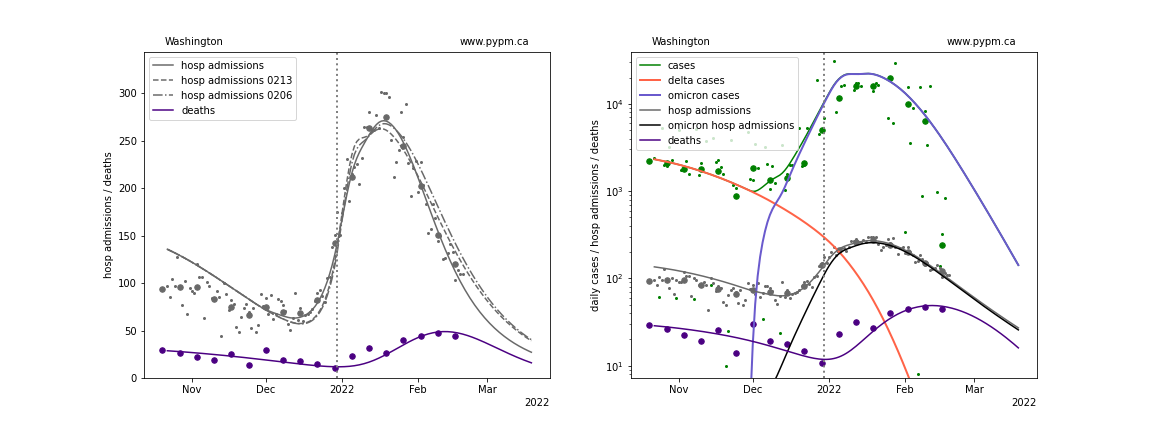
Wisconsin
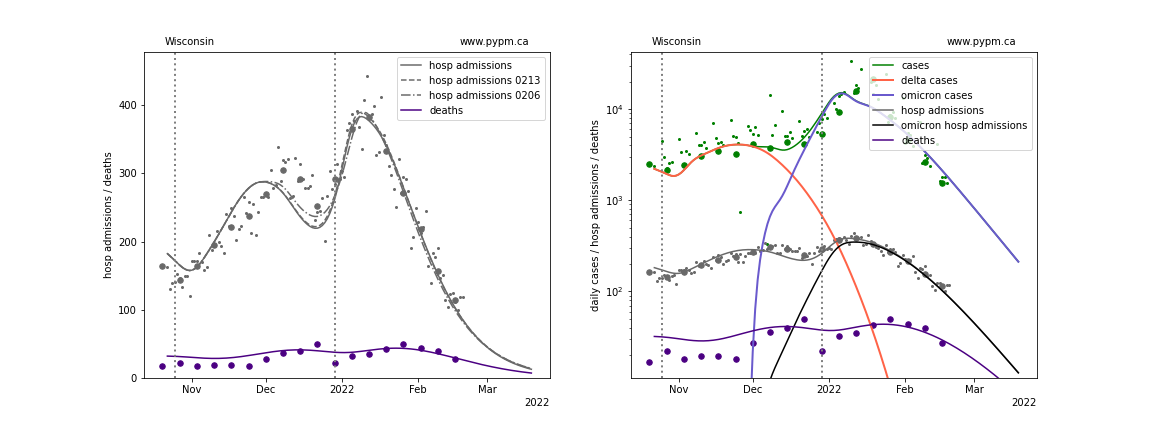
West Virginia
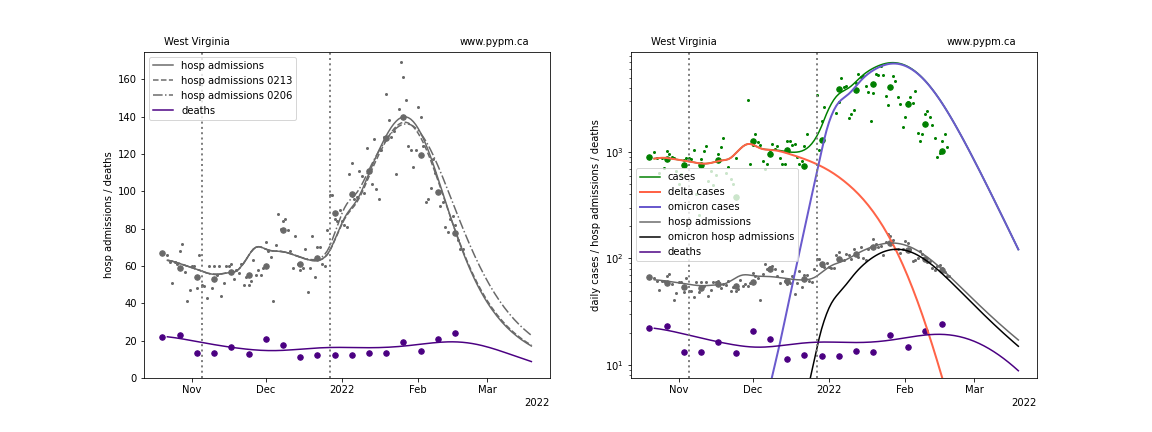
Wyoming
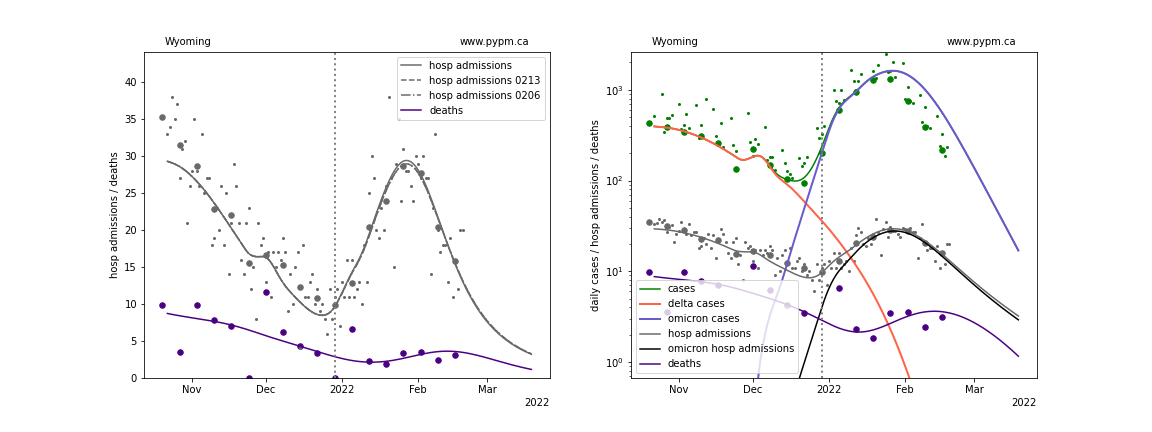
Comparisons of Omicron daily hospital admissions
Hospital admissions can be used in a per-capita comparison of infections between states, avoiding potential issues with test capacity. Using Omicron hospital admissions removes the variability of the Delta hospital admissions taking place during the emergence of Omicron. This metric relies on a model to attribute hospital admissions during the phase when Delta contributes a substantial fraction of hospital admissions.
The plot below shows this metric versus calendar date. For some regions, the states with the earliest introduction and rise of cases led to the largest peak infection rate.
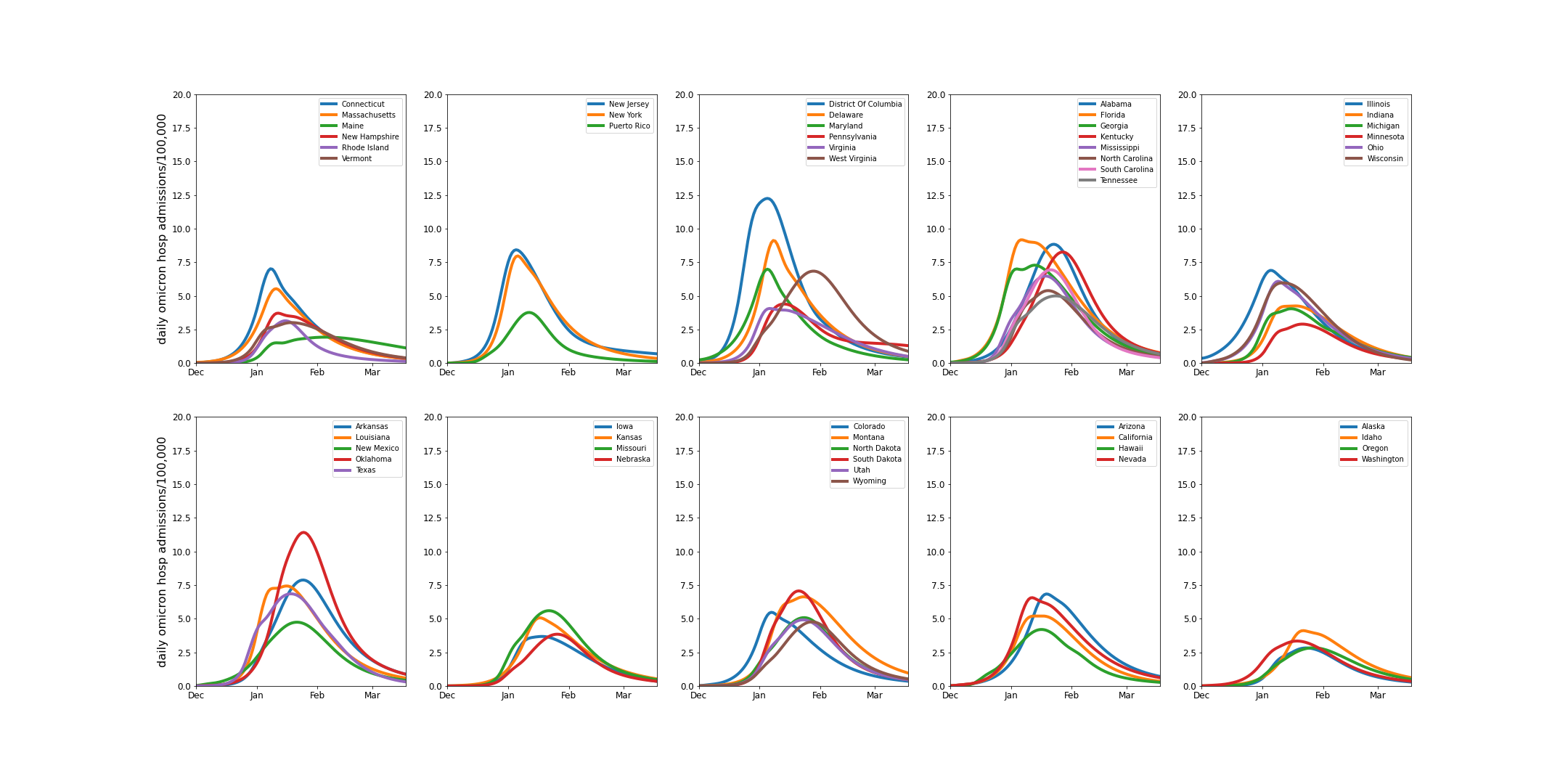
The plot below shows the metric, aligned on the day that Omicron hospital admissions first exceeded 2 per day per 100,000. The solid lines end on February 20, and the dashed lines show model projections.
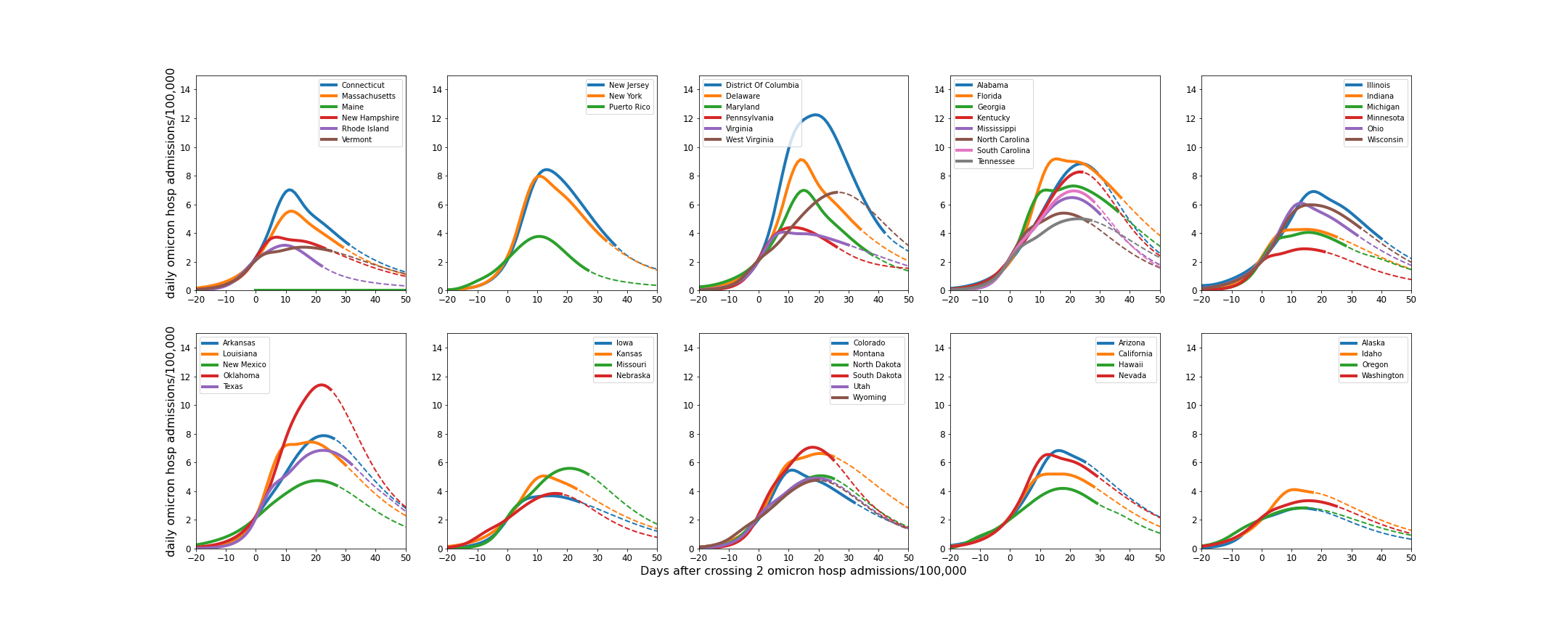
The same figure shown in log scale:
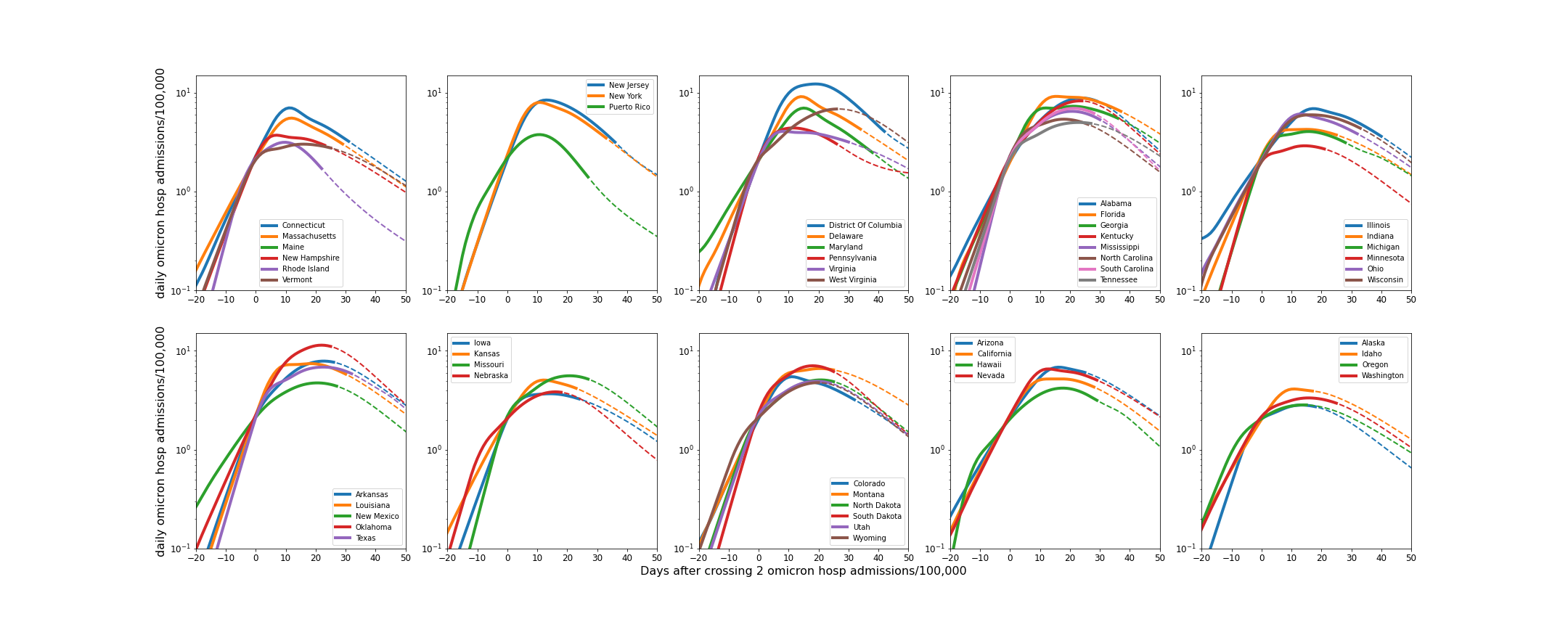
USA Forecast
The following plots show the combined US 4 week forecast. The shaded areas are 50%, 80%, and 95% intervals.
USA
